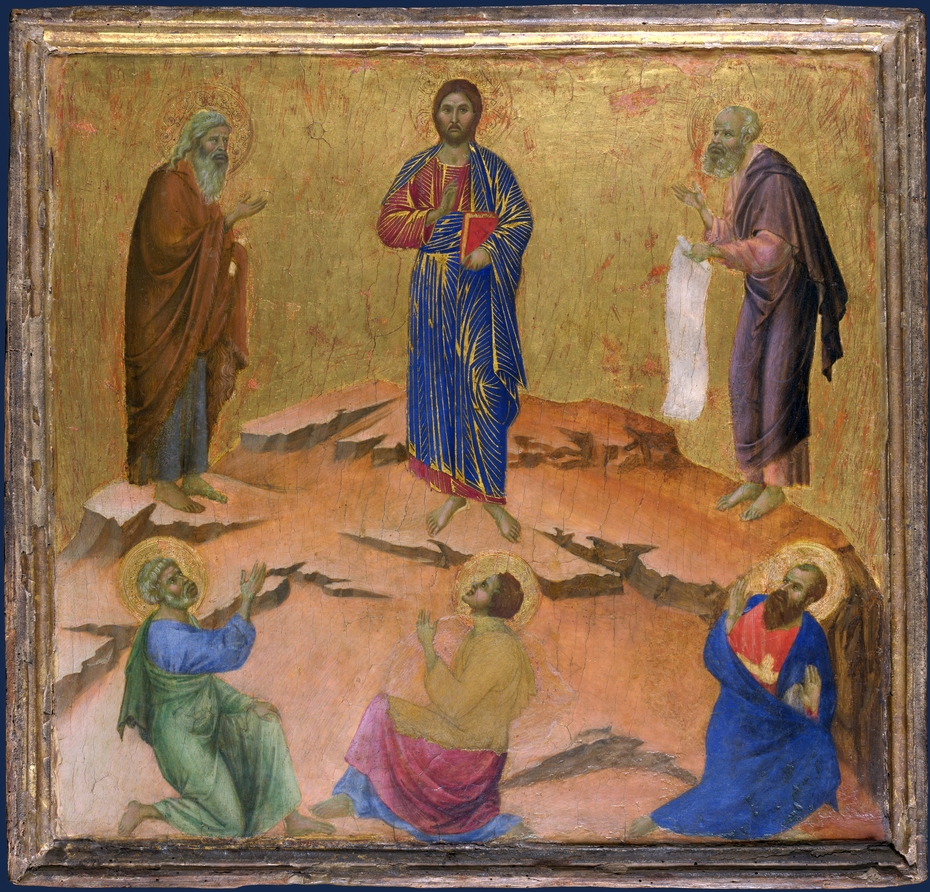miércoles, 5 de junio de 2019
miércoles, 29 de mayo de 2019
miércoles, 24 de abril de 2019
PAINTING TECHNIQUES IN THE MIDDLE AGES
FRESCO PAINTING (WALL)
First, the master and his apprentices prepare the materials:
They obtain the colours from the pigments and prepare the ingredients to make the plaster.
Second, after the plaster has rested, the master begins to cover the wall with the plaster to correct the imperfections of its surface.
Then, the master uses geometric shapes to create the composition of the scene. Over the geometric diagram, he begins to draw the outline of the figures with charcoal, and after that the details.

Later, the master begins to outline the drawing with paints. He first cover the half of the figure with plaster, in order that the other half can be a pattern, so he can start to paint the covered half. When he finishes, he covers the other half and do the same.
With different paint brushes and colours, the master make de details to finish the painting.
TEMPERA PAINTING (WOODEN PANEL)

Second, the master draws the scene in a piece of paper and put it on the wooden panel. With the end of a brush, he outline the drawing in the paper, tracing it in the panel.
Meanwhile, the apprentices prepared the paintings by two different methods:
- They mixed the pigments with a binder, milk's fats, to obtain a specific texture.
- Or they mixed the pigments with a mix of egg yolk, oil, varnish and water.
With all the colours prepared, the master mixed the colours on a flat surface. Then, he started to outline the figures drawn in the pannel with black paint.
Later, he add the red colour, the yellow, and he finally complete it with the rest of colours, details and shadows, meanly in the faces.
miércoles, 10 de abril de 2019
miércoles, 3 de abril de 2019
miércoles, 27 de febrero de 2019
miércoles, 6 de febrero de 2019
THE CORONATION OF CHARLEMAGNE
The two texts were are going to analyze are recounts, that tell us about the coronation of Charlemagne. Both are primary sources, because they are directly traduced from the original one; and they're also public, they were made to be read by any person.There are different authors, the first is a writer from the Pope's orbit and the second is a member of Charlemagne's court, that provide different perspectives about the same event.

The coronation of Charlemagne, that took place in the year 800, is the main theme of both texts. It was celebrated in Rome, at the Basilica of Saint Peter the Apostle, on December 25th. According to the texts, Charlemagne was crowned as emperor by Pope Leo in a religious celebration, in front of all the people of Rome. Charlemagne was a Frankish king, and later emperor, who ruled much of Western Europe from 768 to 814. During his reign, he sought to unite all the Germanic peoples into one kingdom and to convert them to Christianity
A further analysis of the texts shows that they have some similarities. Both texts coincide in the place and the date of the celebration: it was at St. Peter's basilica,in Rome, on December 25th, in the year 800. Another thing in common is the praise of the people of Rome that took part in the coronation. Basing on the date of the celebration, the day of Lord's birth, we can come to the conclusion that Charlemagne chose this day with political, religious and symbolic purposes. He sought to compare himself with Jesus and he is also competing with the Pope for the leadership of the Christianity.
That "competition" between the Pope and Charlemagne, is clearly founded in the two different perspectives of the texts. The first text, written from the Pope's orbit, gives importance to the Pope and shows Charlemagne as his subject, (lines 3, 10, 12- text 1).
On the other hand, the second text, written by a member of Charlemagne's court, explicitly says that Charlemagne received the crowned standing up and that the Pope kneeled down to "adored" him, (line 5- text 2).
As a conclusion we can relate the texts with Charlemagne's biography, especially with the episode of the war against the Lombards. He went to Rome to fight against the Lombards, as his father Pepin the Short did, and to help Pope Leo III. He was considered the defender of Christianity, and meanwhile he was in Rome, he was crowned by the Pope as the new Holy Roman Emperor. With regard to Charlemagne's objectives, we can affirm that he fought to unite all the Germanic peoples into one kingdom, with one ruler and one religion, Christianity. Based on these dates we can finally argue that Charlemagne sought to unite his kingdom in the form of Ancient Roman Empire, trying to recover its grandeur.

miércoles, 16 de enero de 2019
Suscribirse a:
Comentarios (Atom)
